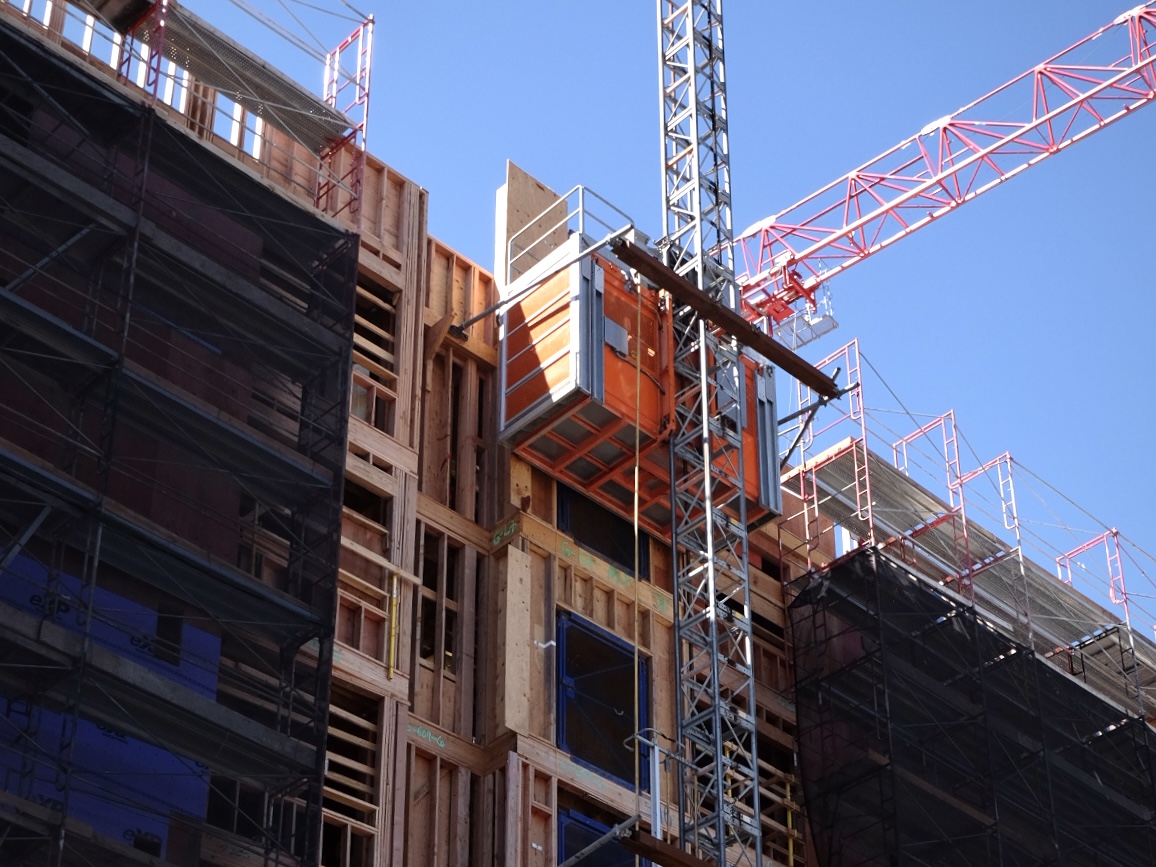San Francisco’s “ambitious” and “bold” plan to increase housing production would produce less than half the number of housing units the state hopes San Francisco will build and only modest changes to affordability, according to a new report from the city controller’s office.
City Economist Ted Egan found in a report released Wednesday that, even in the best-case scenario, the upzoning plan being voted on by supervisors soon would usher in only around 14,600 additional units over the next 20 years.
That’s far fewer units and far more time than the state expects. California is requiring San Francisco to create a realistic pathway to 36,000 additional housing units by 2031. While the state says the current plan does create capacity for those units, Egan’s report predicts less than half those units are likely to be built without other market or regulatory changes.
Egan also found that while increasing supply would decrease prices, effects were modest: Monthly rents would go down by between $75 and $125 dollars, for example.
YIMBYs are already up in arms.
“Family zoning is both necessary, but not sufficient,” Jane Natoli of YIMBY Action said. Because the city is too deep in the upzoning process to make significant changes, “we’re going to have to start looking at other levers,” she added.
The California Housing Defense Fund, a legal group that sues cities and counties for breaking housing laws, said on Wednesday that it would take the city to court for failing to comply with state law if they proceed with the zoning as is. They argue that the models that the city used to evaluate the capacity created by its rezoning are flawed, and cite Egan’s approach as a better alternative.
The city must either change its rezoning plan so that it can realistically produce about 36,000 homes or make other policy changes, like cutting fees and taxes, to reach that number, the group argued in a letter to the Board of Supervisors.
Mayor Daniel Lurie’s office, which has been spearheading the rezoning, said the current zoning plan would “help build the housing we need and meet our obligations under state law.”
Others said this proved what was already known: Zoning itself won’t be enough.
“Our housing crisis was not caused just by zoning,” said Supervisor Myrna Melgar, who chairs the Board of Supervisors Land Use Committee. “In order to fix a problem that is so complicated, we’re going to need more than just zoning. We’re going to need financing for market rate development. We’re going to need funding for affordable housing development. There’s a whole bunch of things that we need to do.”
San Francisco is currently under a state mandate to upzone the city and let developers build taller, denser housing projects. The state has preliminarily approved San Francisco’s plan.
The state’s mandate only requires the city to plan for more units, not to actually build them — that is left up to private developers.
And developers would build under the rezoning. The report found that between 10,098 and 17,845 are likely to be built in the western and northern parts of the city in the next 20 years if the upzoning passes. Without it, only between 1,594 and 3,199 units would be built.
These new units would result in modest effects on affordability: a $25,000 to $40,500 decrease in the price of a condo, for instance, or a $75 to $125 decrease in monthly rent.
Critics of the plan have worried that residents and businesses would be displaced by construction, though. The report predicts that over 20 years, 500 to 1,000 additional units would be demolished under the new upzoning.
The numbers range because there many factors affect how much housing is built, including how much it costs to build and how much the new units will rent or sell for.
So Egan modeled two different scenarios. In the “low growth” scenario, Egan assumed that San Francisco’s housing prices, which are still below pre-pandemic levels, continue to slowly increase. In those circumstances, developers would have a harder time turning a profit and would have a lesser incentive to build, resulting in fewer effects.
But it’s also possible that San Francisco’s housing and rent prices increase far more quickly, as they have been doing the last few months. If that happens, San Francisco would be more likely to see results on the higher ends of the ranges.
Egan noted that, without construction, a more limited housing supply would fail to satisfy demand, driving prices even higher without an eventually decrease.
“If you don’t do the rezoning, you don’t build the housing, and you don’t get this benefit,” Egan said.
Outside the two scenarios, though, Egan explained that there is still a lot of uncertainty — no one has a crystal ball.
For one, officials in City Hall and state government are looking to make other reforms to speed up housing production. The predictions in this report are based on current construction rules, but new regulations could change the game.
There is also the question of the national economy. Since housing production requires taking out loans, if interest rates remain high, building housing gets tougher. But that could change in the future.
Ultimately, though, Egan emphasized in his report that any level of housing production would lead to benefits to San Francisco’s economy.
While business disruptions and relocation costs would lead to $16 to $28 million in losses on average, the housing production would also lead to a growing population and more jobs in the city, benefitting the city’s economy. The city’s GDP would grow by $560 million to $940 million per year on average, the report predicts.
“There’s a lot of uncertainty about how much housing we’ll actually get,” Egan said. “There’s actually a lot less uncertainty about the economic impact.”

